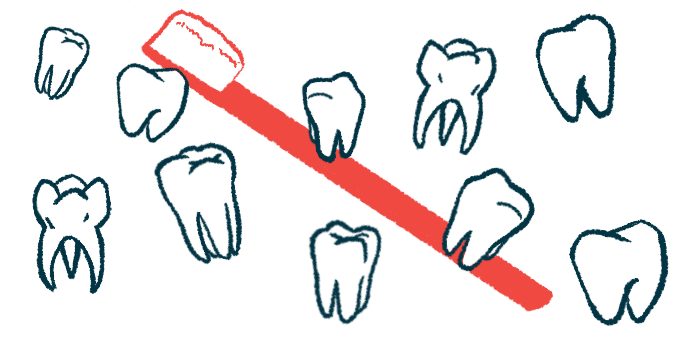Botulinum toxin injections help reduce teeth grinding in boy, 8
Toxin use may be 'best option' for patients with Rett: Case report
Written by |

Injections of botulinum toxin in the muscles involved in chewing were found to reduce teeth grinding in an 8-year-old boy with Rett syndrome, according to a case report.
Botulinum toxin blocks the release of acetylcholine, a chemical messenger, at the neuromuscular junction — the place where nerve cells and muscles communicate — for four to six months. This typically is followed by muscle function recovery.
“We can objectively state that we have reduced … the amount of grinding in the presented patient,” the researchers wrote, adding, however, that “to establish the success of our efforts, it is necessary to repeat the protocol on a bigger group of children with [Rett].”
According to the team, the case also highlights the need for a rehabilitation program for Rett patients for muscles involved in mastication, or chewing, combined with the botulinum toxin injections, so as to improve treatment benefits.
The case was described in a study, “The use of botulinum toxin for grinding in patients with Rett syndrome — Case report,” published in the journal Special Care in Dentistry.
Teeth grinding can damage permanent teeth
Rett syndrome is mostly caused by mutations in the MECP2 gene, which provides instructions to produce the MECP2 protein. This protein regulates the activity of other genes by switching them on and off, playing an important role in brain development and function.
Symptoms of the disease include growth defects and motor problems, as well as cognitive, sensory, and emotional issues. Patients usually have normal development until 6-18 months of age, at which point it starts to slow, stagnate, or regress.
One of the most common problems in people with Rett is teeth grinding, which can cause damage to the patients’ permanent teeth.
Now, researchers in Poland described the case of a young boy referred to their department of maxillofacial orthopedics and orthodontics due to excessive grinding secondary to Rett.
A physical examination revealed excessive salivation and irritated and cracked sores at the corners of the mouth. The boy also had excessive growth of the muscles important for chewing — specifically the masseter and temporal muscles.
Examining his mouth was difficult due to the excessive grinding, the scientists noted. But it did show good oral hygiene and a correct occlusion of the molars, or how the lower jaw and upper jaw come together when the teeth meet.
The use of a toxin appears to be the best option for non-cooperative patients, such as those with [Rett syndrome].
The treatment plan included botulinum toxin injections off-label, or when a drug is used for a different purpose than the one for which it was approved. With the patient’s consent, the treatment (marketed as Azzalure) was administered in the masseter and temporal muscles.
“Botulinum toxin is beneficial for treating bruxism [teeth grinding] because it functions independently of the patient,” the researchers wrote.
“Consequently, the use of a toxin appears to be the best option for non-cooperative patients, such as those with [Rett syndrome],” they wrote.
Botulinum toxin injections best alongside rehabilitation program
While preparing for the injections, the patient started a rehabilitation program — which he continued to attend until the treatment was concluded.
His muscle activity was assessed by surface electromyographic analysis, known as sEMG, before treatment, and then one week, one month, and four months after the botulinum toxin injections were given.
The measurement was performed for three minutes at each test, with muscle contraction during grinding and the amount of grinding evaluated.
The results showed that both the maximum tension in the muscles and the amount of grinding were reduced after one week and one month, which was confirmed by the child’s parents.
After four months, the parents reported that teeth grinding was again more frequent, indicating that the toxin could have diminishing effectiveness. The sEMG exam revealed an asymmetry in the muscles’ action, with the left muscles predominant in comparison to the right.
“sEMG played an essential part in our research as a measured method of therapy success,” the researchers wrote.
The scientists noted that long-term botulinum toxin use could result in the production of blocking antibodies against the therapy and in excessive muscle wasting.
Additional rehabilitation and observation were recommended.
“Further investigation involving a larger [group] of patients and an extended follow-up duration would be valuable in substantiating the efficacy of botulinum toxin utilization in individuals diagnosed with [Rett syndrome],” the scientists concluded.







